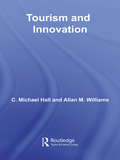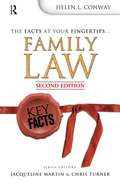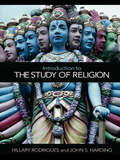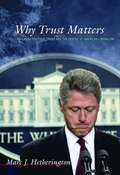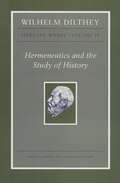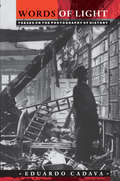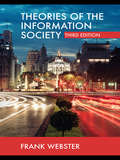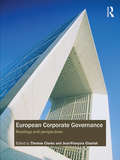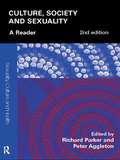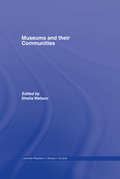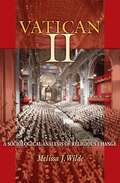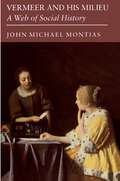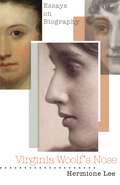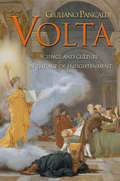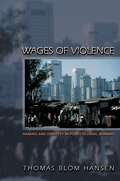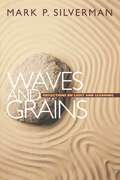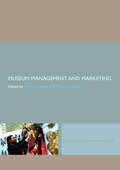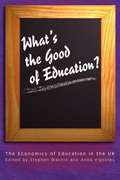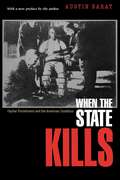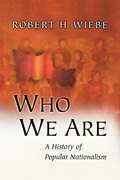- Table View
- List View
Tourism and Innovation: Perspectives On Systems, Restructuring And Innovations (Contemporary Geographies of Leisure, Tourism and Mobility)
by Michael C. Hall Allan WilliamsTourism is often described as an industry with high growth rates, and it is subject to radical change in how it is produced and consumed. However, there is still a relatively poor understanding of how such changes are brought about – that is, through innovation. This book is the first to provide a comprehensive review of innovation in tourism, while also considering how tourism itself contributes to innovative local, regional and national development strategies. This timely book places tourism innovation in the context of current academic and policy concerns relating to knowledge, competition, and the management of change. A substantial introductory chapter provides an overview of what makes innovation in tourism both distinctive from, and similar to innovation in other economic sectors. This is followed by three general scene setting chapters which explore how competition and the search for competitiveness drive tourism innovation, how knowledge transfers and knowledge creation lead the process, and how institutions shape innovation. These provide a coherent theoretical framework for understanding the roles of different agencies in innovation, ranging from the state, to the firm, to the consumer. The next four chapters analyze innovation at different scales. Two chapters review the territorial dimensions of innovation through the fresh perspectives of the national and regional innovation systems, followed by reviews of the determinants of innovation in the firm, and the contested and complex role of entrepreneurship. The final chapter summarises the importance of understanding tourism innovation. This is a groundbreaking volume which provides an accessible introduction to a key but neglected topic. It provides a readable account of the multidisciplinary research on innovation and relates the emerging theoretical framework to tourism. A clear conceptual framework is complemented by fifty boxes which provide a range of illustrative international case studies. This book will be a useful guide for researchers and students of tourism studies, management and business and geography.
Tourism and Innovation (Contemporary Geographies of Leisure, Tourism and Mobility)
by Michael C. Hall Allan WilliamsTourism is often described as an industry with high growth rates, and it is subject to radical change in how it is produced and consumed. However, there is still a relatively poor understanding of how such changes are brought about – that is, through innovation. This book is the first to provide a comprehensive review of innovation in tourism, while also considering how tourism itself contributes to innovative local, regional and national development strategies. This timely book places tourism innovation in the context of current academic and policy concerns relating to knowledge, competition, and the management of change. A substantial introductory chapter provides an overview of what makes innovation in tourism both distinctive from, and similar to innovation in other economic sectors. This is followed by three general scene setting chapters which explore how competition and the search for competitiveness drive tourism innovation, how knowledge transfers and knowledge creation lead the process, and how institutions shape innovation. These provide a coherent theoretical framework for understanding the roles of different agencies in innovation, ranging from the state, to the firm, to the consumer. The next four chapters analyze innovation at different scales. Two chapters review the territorial dimensions of innovation through the fresh perspectives of the national and regional innovation systems, followed by reviews of the determinants of innovation in the firm, and the contested and complex role of entrepreneurship. The final chapter summarises the importance of understanding tourism innovation. This is a groundbreaking volume which provides an accessible introduction to a key but neglected topic. It provides a readable account of the multidisciplinary research on innovation and relates the emerging theoretical framework to tourism. A clear conceptual framework is complemented by fifty boxes which provide a range of illustrative international case studies. This book will be a useful guide for researchers and students of tourism studies, management and business and geography.
Key Facts: Family Law (Key Facts)
by Helen L ConwayKey Facts has been specially written for students studying law. It is the essential revision tool for a broad range of law courses. The series is written and edited by an expert team of authors whose experience means they know exactly what is required in a revision aid. They include examiners, barristers and lecturers who have brought their expertise and knowledge to the series to make it user-friendly and accessible. Key features include: user-friendly layout and style; diagrams, charts and tables to illustrate key points; summary charts at a basic level, followed by more detailed explanations, to aid revision at every level, pocket sized and easily portable; highly-regarded authors.
Introduction to the Study of Religion
by Hillary P. Rodrigues John S. HardingWhy do people study religion? How have they studied it in the past? How do we study religion today? Is the academic study of religion the same as religious education? These and many other questions are addressed in this engaging introduction to the discipline of religious studies, written by two experienced university teachers. The authors have crafted this book to familiarize novice students with key concepts and terminology in the study of religion. More advanced students will find a varied array of theoretical perspectives and methodological approaches to the field. Topics include: definitions of religion perspectives in the study and teaching of religion how religion began to be studied: traditional perspectives – philosophical and theological how people experience religion: perspectives in the study of religious consciousness and perception – phenomenological and psychological studying religion within communities: Social and cultural perspectives – anthropological, sociological, political and economic judging religion: critical perspectives –feminist approaches, the interaction of popular literature and religion contextual perspectives – historical and comparative. The book encourages students to think critically about the theories and methods presented. Students will find arguments for the strengths and limitations of these approaches, understand connections among religious studies and other intellectual movements, and develop their own ideas of how they might want to go about the study of religion. Summary boxes, a timeline, a glossary and other pedagogic aids help students grasp key concepts, along with a companion website at www.sastor.com.
Introduction to the Study of Religion
by John S. Harding Hillary P. RodriguesWhy do people study religion? How have they studied it in the past? How do we study religion today? Is the academic study of religion the same as religious education? These and many other questions are addressed in this engaging introduction to the discipline of religious studies, written by two experienced university teachers. The authors have crafted this book to familiarize novice students with key concepts and terminology in the study of religion. More advanced students will find a varied array of theoretical perspectives and methodological approaches to the field. Topics include: definitions of religion perspectives in the study and teaching of religion how religion began to be studied: traditional perspectives – philosophical and theological how people experience religion: perspectives in the study of religious consciousness and perception – phenomenological and psychological studying religion within communities: Social and cultural perspectives – anthropological, sociological, political and economic judging religion: critical perspectives –feminist approaches, the interaction of popular literature and religion contextual perspectives – historical and comparative. The book encourages students to think critically about the theories and methods presented. Students will find arguments for the strengths and limitations of these approaches, understand connections among religious studies and other intellectual movements, and develop their own ideas of how they might want to go about the study of religion. Summary boxes, a timeline, a glossary and other pedagogic aids help students grasp key concepts, along with a companion website at www.sastor.com.
Why Trust Matters: Declining Political Trust and the Demise of American Liberalism (PDF)
by Marc J. HetheringtonAmerican public policy has become demonstrably more conservative since the 1960s. Neither Jimmy Carter nor Bill Clinton was much like either John F. Kennedy or Lyndon Johnson. The American public, however, has not become more conservative. Why, then, the right turn in public policy? Using both individual and aggregate level survey data, Marc Hetherington shows that the rapid decline in Americans' political trust since the 1960s is critical to explaining this puzzle. As people lost faith in the federal government, the delivery system for most progressive policies, they supported progressive ideas much less. The 9/11 attacks increased such trust as public attention focused on security, but the effect was temporary. Specifically, Hetherington shows that, as political trust declined, so too did support for redistributive programs, such as welfare and food stamps, and race-targeted programs. While the presence of race in a policy area tends to make political trust important for whites, trust affects policy preferences in other, non-race-related policy areas as well. In the mid-1990s the public was easily swayed against comprehensive health care reform because those who felt they could afford coverage worried that a large new federal bureaucracy would make things worse for them. In demonstrating a strong link between public opinion and policy outcomes, this engagingly written book represents a substantial contribution to the study of public opinion and voting behavior, policy, and American politics generally.
Wilhelm Dilthey: Hermeneutics and the Study of History (PDF)
by Wilhelm Dilthey Frithjof Rodi Rudolf A. MakkreelThe philosopher and historian of culture Wilhelm Dilthey (1833-1911) has had a significant and continuing influence on twentieth-century Continental philosophy and in a broad range of scholarly disciplines. This volume is the third to be published in Princeton University Press's projected six-volume series of his most important works. Part One makes available three of his works on hermeneutics and its history: "Schleiermacher's Hermeneutical System in Relation to Earlier Protestant Hermeneutics" (The Prize Essay of 1860); "On Understanding and Hermeneutics" (1867-68), based on student lecture notes, and the "The Rise of Hermeneutics" (1900), which traces the history of hermeneutics back to Hellenistic Greece. All the addenda to this well-known essay are translated here, some for the first time. In them Dilthey articulates three philosophical aporias concerning hermeneutics and projects an ultimate convergence between understanding and explanation. Part Two provides translations of review essays by Dilthey on Buckle's use of statistical history and on Burckhardt's cultural history; an essay "Friedrich Schlosser and the Problem of Universal History;" and a talk recalling his early years as a student of Boeckh, Jakob Grimm, Mommsen, Ranke, and Ritter. It also contains the important historical essay "The Eighteenth Century and the Historical World," in which Dilthey reexamines the Enlightenment to show its significant contributions to the rise of historical consciousness.
Words of Light: Theses on the Photography of History (PDF)
by Eduardo CadavaHere Eduardo Cadava demonstrates that Walter Benjamin articulates his conception of history through the language of photography. Focusing on Benjamin's discussions of the flashes and images of history, he argues that the questions raised by this link between photography and history touch on issues that belong to the entire trajectory of his writings: the historical and political consequences of technology, the relation between reproduction and mimesis, images and history, remembering and forgetting, allegory and mourning, and visual and linguistic representation. The book establishes the photographic constellation of motifs and themes around which Benjamin organizes his texts and thereby becomes a lens through which we can begin to view his analysis of the convergence between the new technological media and a revolutionary concept of historical action and understanding. Written in the form of theses--what Cadava calls "snapshots in prose"--the book memorializes Benjamin's own thetic method of writing. It enacts a mode of conceiving history that is neither linear nor successive, but rather discontinuous--constructed from what Benjamin calls "dialectical images." In this way, it not only suggests the essential rapport between the fragmentary form of Benjamin's writing and his effort to write a history of modernity but it also skillfully clarifies the relation between Benjamin and his contemporaries, the relation between fascism and aesthetic ideology. It gives us the most complete picture to date of Benjamin's reflections on history.
Theories of the Information Society (International Library of Sociology)
by Frank WebsterCoping in an era of information flows, of virtual relationships and breakneck change poses challenges to one and all. In Theories of the Information Society Frank Webster makes sense of the information explosion, taking a sceptical look at what thinkers mean when they refer to the 'Information Society' and critically examines the major post-war theories and approaches to informational development. This third edition brings the book right up to date with both new theoretical work and, social and technological changes (such as the rapid growth of the Internet and accelerated globalization), reassessing the work of key theorists in light of these changes. This book is essential reading for students of contemporary social theory and anybody interested in social and technological change in the post-war era. It addresses issues of central concern to students of sociology, politics, communications, information science, cultural studies, computing and librarianship.
Theories of the Information Society (International Library of Sociology)
by Frank WebsterCoping in an era of information flows, of virtual relationships and breakneck change poses challenges to one and all. In Theories of the Information Society Frank Webster makes sense of the information explosion, taking a sceptical look at what thinkers mean when they refer to the 'Information Society' and critically examines the major post-war theories and approaches to informational development. This third edition brings the book right up to date with both new theoretical work and, social and technological changes (such as the rapid growth of the Internet and accelerated globalization), reassessing the work of key theorists in light of these changes. This book is essential reading for students of contemporary social theory and anybody interested in social and technological change in the post-war era. It addresses issues of central concern to students of sociology, politics, communications, information science, cultural studies, computing and librarianship.
European Corporate Governance: Readings and Perspectives
by Thomas Clarke Jean-Francois ChanlatFor decades, Europe has sought to become more financially integrated with the United States and thus European legal institutions, regulatory, governance and accounting practices have faced pressures to adapt to international competitive markets. Against this backdrop, European corporate governance systems have been criticized as being less efficient than the Anglo-American market based systems. This textbook examines the unique dimensions and qualities of European corporate governance. Reforms of key institutions, the doctrine of shareholder value and the seemingly irresistible growth of CEO power and reward are critically analyzed. The book brings out the richness of European corporate governance systems, as well as highlighting historical weaknesses that will require further work for a sustainable corporate governance environment in the future. In light of the most severe financial crisis since the 1930s, this intelligent look at European corporate governance is a vital textbook for courses on corporate governance and a great supplementary textbook on a host of business, management and accounting classes.
Culture, Society and Sexuality: A Reader (Sexuality, Culture and Health)
by Richard Parker Peter AggletonThis new and revised edition of Culture, Society and Sexuality brings together and makes accessible a broad and international selection of readings to provide insights into the social, cultural, political and economic dimensions of sexuality and relationships, and emerging discourses around sexual and reproductive rights. Clearly structured and presented, the book makes an extremely useful reference for students and researchers. Section one focuses on the social and cultural construction of sexuality as an emerging field of inquiry over the course of recent decades, and examines some of the most important theoretical insights and areas of investigation that have emerged as this field has developed. Section two links research on the construction of sexuality to a growing body of work on gender and sexuality in relation to a wide range of practical issues and contemporary social policy debates. It is an essential reader not only for students and researchers in these areas, but also for activists, health workers and service providers, who daily confront practical and policy issues related to sexuality, sexual health and sexual rights.
Culture, Society and Sexuality: A Reader (Sexuality, Culture and Health)
by Richard Parker Peter AggletonThis new and revised edition of Culture, Society and Sexuality brings together and makes accessible a broad and international selection of readings to provide insights into the social, cultural, political and economic dimensions of sexuality and relationships, and emerging discourses around sexual and reproductive rights. Clearly structured and presented, the book makes an extremely useful reference for students and researchers. Section one focuses on the social and cultural construction of sexuality as an emerging field of inquiry over the course of recent decades, and examines some of the most important theoretical insights and areas of investigation that have emerged as this field has developed. Section two links research on the construction of sexuality to a growing body of work on gender and sexuality in relation to a wide range of practical issues and contemporary social policy debates. It is an essential reader not only for students and researchers in these areas, but also for activists, health workers and service providers, who daily confront practical and policy issues related to sexuality, sexual health and sexual rights.
Museums and their Communities (Leicester Readers in Museum Studies)
by Sheila WatsonUsing case studies drawn from all areas of museum studies, Museums and their Communities explores the museums as a site of representation, identity and memory, and considers how it can influence its community. Focusing on the museum as an institution, and its social and cultural setting, Sheila Watson examines how museums use their roles as informers and educators to empower, or to ignore, communities. Looking at the current debates about the role of the museum, she considers contested values in museum functions and examines provision, power, ownership, responsibility, and institutional issues. This book is of great relevance for all disciplines as it explores and questions the role of the museum in modern society.
Museums and their Communities (Leicester Readers in Museum Studies)
by Sheila WatsonUsing case studies drawn from all areas of museum studies, Museums and their Communities explores the museums as a site of representation, identity and memory, and considers how it can influence its community. Focusing on the museum as an institution, and its social and cultural setting, Sheila Watson examines how museums use their roles as informers and educators to empower, or to ignore, communities. Looking at the current debates about the role of the museum, she considers contested values in museum functions and examines provision, power, ownership, responsibility, and institutional issues. This book is of great relevance for all disciplines as it explores and questions the role of the museum in modern society.
Vatican II: A Sociological Analysis of Religious Change (PDF)
by Melissa J. WildeOn an otherwise ordinary Sunday morning in 1964, millions of Roman Catholics around the world experienced history. For the first time in centuries, they attended masses that were conducted mostly in their native tongues. This occasion marked only the first of many profound changes to emanate from the Second Vatican Council (1962-1965). Known popularly as Vatican II, it would soon give rise to the most far-reaching religious transformation since the Reformation. In this groundbreaking work of cultural and historical sociology, Melissa Wilde offers a new explanation for this revolutionary transformation of the Church. Drawing on newly available sources--including a collection of interviews with the Council's key bishops and cardinals, and primary documents from the Vatican Secret Archive that have never before been seen by researchers--Wilde demonstrates that the pronouncements of the Council were not merely reflections of papal will, but the product of a dramatic confrontation between progressives and conservatives that began during the first days of the Council. The outcome of this confrontation was determined by a number of factors: the Church's decline in Latin America; its competition and dialogue with other faiths, particularly Protestantism, in northern Europe and North America; and progressive clerics' deep belief in the holiness of compromise and their penchant for consensus building. Wilde's account will fascinate not only those interested in Vatican II but anyone who wants to understand the social underpinnings of religious change.
Vermeer and His Milieu: A Web of Social History (PDF)
by John Michael MontiasThis book is not only a fascinating biography of one of the greatest painters of the seventeenth century but also a social history of the colorful extended family to which he belonged and of the town life of the period. It explores a series of distinct worlds: Delft's Small-Cattle Market, where Vermeer's paternal family settled early in the century; the milieu of shady businessmen in Amsterdam that recruited Vermeer's grandfather to counterfeit coins; the artists, military contractors, and Protestant burghers who frequented the inn of Vermeer's father in Delft's Great Market Square; and the quiet, distinguished "Papists Corner" in which Vermeer, after marrying into a high-born Catholic family, retired to practice his art, while retaining ties with wealthy Protestant patrons. The relationship of Vermeer to his principal patron is one of many original discoveries in the book.
Virginia Woolf's Nose: Essays on Biography (PDF)
by Hermione LeeWhat choices must a biographer make when stitching the pieces of a life into one coherent whole? How do we best create an accurate likeness of a private life from the few articles that linger after death? How do we choose what gets left out? This intriguing and witty collection of essays by an internationally acclaimed biographer looks at how biography deals with myths and legends, what goes missing and what can't be proved in the story of a life. Virginia Woolf's Nose presents a variety of case-studies, in which literary biographers are faced with gaps and absences, unprovable stories and ambiguities surrounding their subjects. By looking at stories about Percy Bysshe Shelley's shriveled, burnt heart found pressed between the pages of a book, Jane Austen's fainting spell, Samuel Pepys's lobsters, and the varied versions of Virginia Woolf's life and death, preeminent biographer Hermione Lee considers how biographers deal with and often utilize these missing body parts, myths, and contested data to "fill in the gaps" of a life story. In "Shelley's Heart and Pepys's Lobsters," an essay dealing with missing parts and biographical legends, Hermione Lee discusses one of the most complicated and emotionally charged examples of the contested use of biographical sources. "Jane Austen Faints" takes five competing versions of the same dramatic moment in the writer's life to ask how biography deals with the private lives of famous women. "Virginia Woolf's Nose" looks at the way this legendary author's life has been translated through successive transformations, from biography to fiction to film, and suggests there can be no such thing as a definitive version of a life. Finally, "How to End It All" analyzes the changing treatment of deathbed scenes in biography to show how biographical conventions have shifted, and asks why the narrators and readers of life-stories feel the need to give special meaning and emphasis to endings. Virginia Woolf's Nose sheds new light on the way biographers bring their subjects to life as physical beings, and offers captivating new insights into the drama of "life-writing". Virginia Woolf's Nose is a witty, eloquent, and funny text by a renowned biographer whose sensitivity to the art of telling a story about a human life is unparalleled--and in creating it, Lee articulates and redefines the parameters of her craft.
Volta: Science and Culture in the Age of Enlightenment (PDF)
by Giuliano PancaldiGiuliano Pancaldi sets us within the cosmopolitan cultures of Enlightenment Europe to tell the story of Alessandro Volta--the brilliant man whose name is forever attached to electromotive force. Providing fascinating details, many previously unknown, Pancaldi depicts Volta as an inventor who used his international network of acquaintances to further his quest to harness the power of electricity. This is the story of a man who sought recognition as a natural philosopher and ended up with an invention that would make an everyday marvel of electric lighting. Examining the social and scientific contexts in which Volta operated--as well as Europe's reception of his most famous invention--Volta also offers a sustained inquiry into long-term features of science and technology as they developed in the early age of electricity. Pancaldi considers the voltaic cell, or battery, as a case study of Enlightenment notions and their consequences, consequences that would include the emergence of the "scientist" at the expense of the "natural philosopher." Throughout, Pancaldi highlights the complex intellectual, technological, and social ferment that ultimately led to our industrial societies. In so doing, he suggests that today's supporters and critics of Enlightenment values underestimate the diversity and contingency inherent in science and technology--and may be at odds needlessly. Both an absorbing biography and a study of scientific and technological creativity, this book offers new insights into the legacies of the Enlightenment while telling the remarkable story of the now-ubiquitous battery.
Wages of Violence: Naming and Identity in Postcolonial Bombay (PDF)
by Thomas Blom HansenWhen Bombay changed its name to Mumbai in 1995, it was the culmination of a long process that transformed India's primary symbol of modernity and cultural diversity into a site of intense ethnic conflict and violent nationalism. Wages of Violence is a startling account of how the city's atmosphere, dominant public languages, and power structures have changed since the 1960s. The book centers on how Shiv Sena, a militant Hindu movement, has advanced a new, ''plebeian'' political culture and has undermined democratic rule in India's premier city. Drawing on a large body of archival material and conversations with people from all walks of life, Thomas Blom Hansen paints a vivid picture of this dynamic and violent movement. Challenging conventional views of recent trends in Indian politics, Hansen shows that the xenophobic public culture of today's Mumbai has deep roots in the region's history and its contested identities. We are also given revealing insights into the city's Muslim communities and the authorities' understanding and control of the ethno-religious subcultures in the city. Hansen argues cogently that Shiv Sena's success represents the violent possibilities of the ''vernacularization'' of democracy in India. Unfolding at a juncture where the globalization of India's economy is having a deepening impact on the lives of ordinary people, this is a story that resonates with the directions urban growth is taking both elsewhere in India and beyond.
Waves and Grains: Reflections on Light and Learning (PDF)
by Mark P. SilvermanMark Silverman has seen light perform many wonders. From the marvel of seeing inside cloudy liquids as a result of his own cutting-edge research to reproducing and examining an unusual diffraction pattern first witnessed by Isaac Newton 300 years ago, he has studied aspects of light that have inspired and puzzled humans for hundreds of years. In this book, he draws on his many experiences as an optical and atomic physicist--and on his consummate skills as a teacher and writer about the mysteries of physics--to present a remarkable tour of the world of light. He explores theoretical, experimental, and historical themes, showing a keen eye for curious and neglected corners of the study of light and a fascination with the human side of scientific discovery. In the course of the book, he covers such questions as how it is possible to achieve magnifications of a millionfold without a single lens or mirror. He asks what all living things have in common that might one day allow the development of a "life-form scanner" like the one in Star Trek. He considers whether more light can reflect from a surface than strikes it, and explores the origin of the strange hyperpolic diffraction pattern Newton originally produced with sunlight and knives. Silverman also discusses his new and ground-breaking experiments to see into murky substances such as fog or blood--a finding with potential applications as diverse as noninvasive medical testing and remote sensing of the environment. His wide-ranging reflections cover virtually all elements of physical optics, including propagation, reflection, refraction, diffraction, interference, polarization, and scattering. Throughout, Silverman makes extensive reference to both modern research and the original works of giants such as Newton, Fresnel, and Maxwell. In a more personal section about physics and learning, Silverman argues for self-directed learning and discusses the central importance of stimulating scientific curiosity in students. Waves and Grains will encourage a spirit of wonder and inquiry in anyone with scientific interests.
Museum Management and Marketing (Leicester Readers in Museum Studies)
by Richard Sandell Robert R. JanesDrawing together a selection of high quality, intellectually robust and stimulating articles on both theoretical and practice-based developments in the field, this Reader investigates the closely linked areas of management and marketing in the museum. The articles, from established and world-renowned contributors, practitioners and writers at the leading edge of their fields, deal with the museum context of management and how marketing and management practices must take account of the specifics of the museum and the not-for-profit ethos. Key writings from broader literature are included, and the collection of key writings on the investigation and study of management and marketing in the museum are of great benefit not only to those studying the subject, but also to professionals working and developing within the field.
What's the Good of Education?: The Economics of Education in the UK
by Stephen Machin Anna VignolesVolumes have been written about the value of more and better education. But is there sufficient evidence to support the commonly held belief that we, as individuals and as a community, should be investing more in education? This book explores that question in unprecedented detail, drawing on empirical evidence from an impressive array of sources. While much of the focus is on the educational system in the United Kingdom, the book offers lessons of international applicability. A state-of-the-art compendium on education policy and its impact on educational attainment, the book examines numerous large-scale data sources on individual pupils and schools. The questions the book considers are far-ranging: How much do teachers matter for children's educational attainment? What payoff do people get from acquiring more education when they enter the labor market? How well do education systems function to provide employers with the skills they want? The book concludes by issuing some strong policy recommendations and offering an evaluation of what does and does not work in improving educational attainment. The recommendations address such issues as school effectiveness, education financing, individual investment in education, government education initiatives, higher education, labor market rewards, and lifelong learning.
When the State Kills: Capital Punishment and the American Condition (PDF)
by Austin SaratIs capital punishment just? Does it deter people from murder? What is the risk that we will execute innocent people? These are the usual questions at the heart of the increasingly heated debate about capital punishment in America. In this bold and impassioned book, Austin Sarat seeks to change the terms of that debate. Capital punishment must be stopped, Sarat argues, because it undermines our democratic society. Sarat unflinchingly exposes us to the realities of state killing. He examines its foundations in ideas about revenge and retribution. He takes us inside the courtroom of a capital trial, interviews jurors and lawyers who make decisions about life and death, and assesses the arguments swirling around Timothy McVeigh and his trial for the bombing in Oklahoma City. Aided by a series of unsettling color photographs, he traces Americans' evolving quest for new methods of execution, and explores the place of capital punishment in popular culture by examining such films as Dead Man Walking, The Last Dance, and The Green Mile. Sarat argues that state executions, once used by monarchs as symbolic displays of power, gained acceptance among Americans as a sign of the people's sovereignty. Yet today when the state kills, it does so in a bureaucratic procedure hidden from view and for which no one in particular takes responsibility. He uncovers the forces that sustain America's killing culture, including overheated political rhetoric, racial prejudice, and the desire for a world without moral ambiguity. Capital punishment, Sarat shows, ultimately leaves Americans more divided, hostile, indifferent to life's complexities, and much further from solving the nation's ills. In short, it leaves us with an impoverished democracy. The book's powerful and sobering conclusions point to a new abolitionist politics, in which capital punishment should be banned not only on ethical grounds but also for what it does to Americans and what we cherish.
Who We Are: A History of Popular Nationalism (PDF)
by James Sheehan Robert H. Wiebe Sam Bass WarnerHow did educated Westerners make an enemy of an inspiration that has changed the lives of billions? Why is nationalism synonymous with atavism, fanaticism, xenophobia, and bloodshed? In this book, Robert Wiebe argues that we too often conflate nationalism with what states do in its name. By indiscriminately blaming it for terrorism, ethnic cleansing, and military thuggery, we avoid reckoning with nationalism for what it is: the desire among people who believe they share a common ancestry and destiny to live under their own government on land sacred to their history. For at least a century and a half, nationalism has been an effective answer to basic questions of identity and connection in a fluid world. It quiets fears of cultural disintegration and allows people to pursue closer bonds and seek freedom. By looking at nationalism in this clearer light and by juxtaposing it with its two great companion and competitor movements--democracy and socialism--Wiebe is able to understand nationalism's deep appeal and assess its historical record. Because Europeans and their kin abroad monopolized nationalism before World War I, Wiebe begins with their story, identifying migration as a motive force and examining related developments in state building, race theory, church ambition, and linguistic innovation. After case studies of Irish, German, and Jewish nationalism, Wiebe moves to the United States. He discusses America's distinctive place in transatlantic history, emphasizing its liberal government, cultural diversity, and racism. He then traces nationalism's spread worldwide, evaluating its adaptability and limits on that adaptability. The state-dominated nationalism of Japan, Turkey, and Mexico are considered, followed by Pan-Africanism and Nigeria's anticolonial-postcolonial nationalism. Finally, Wiebe shows how nationalism became integrated into a genuinely global process by the 1970s, only to find itself competing at a disadvantage with god- and gun-driven alternatives. This book's original answers to imperative questions will meet with deep admiration and controversy. They will also change the terms on which nationalism is debated for years to come.
